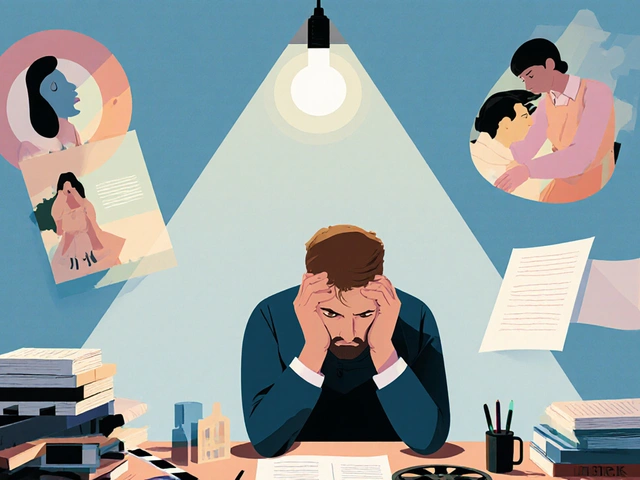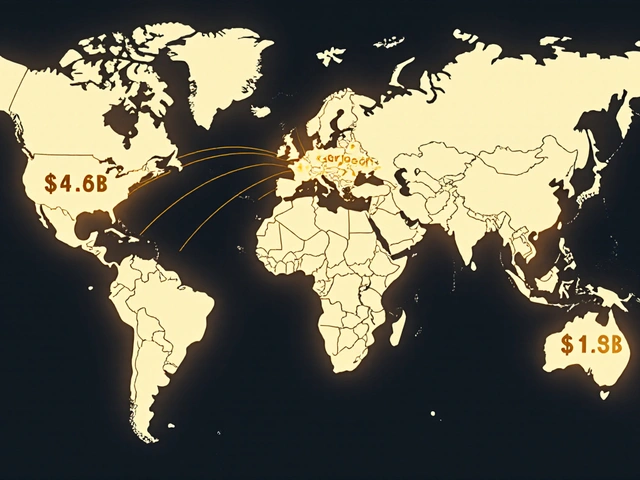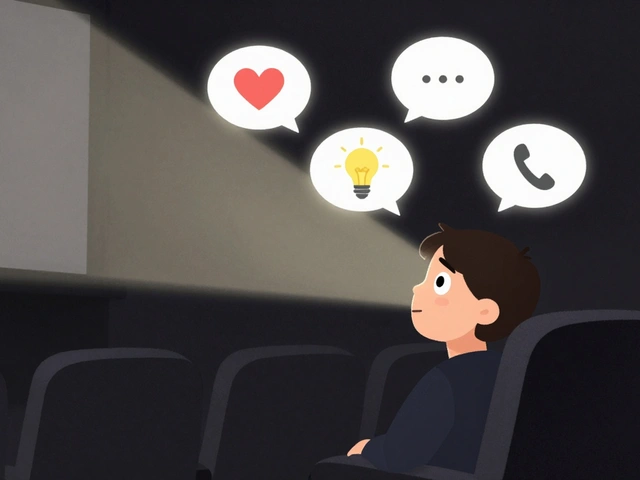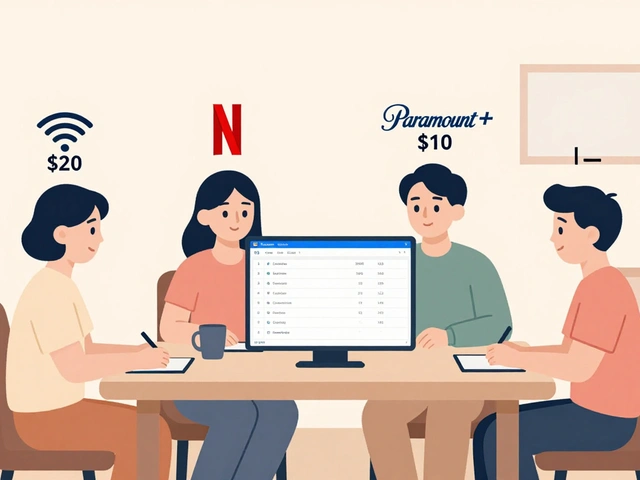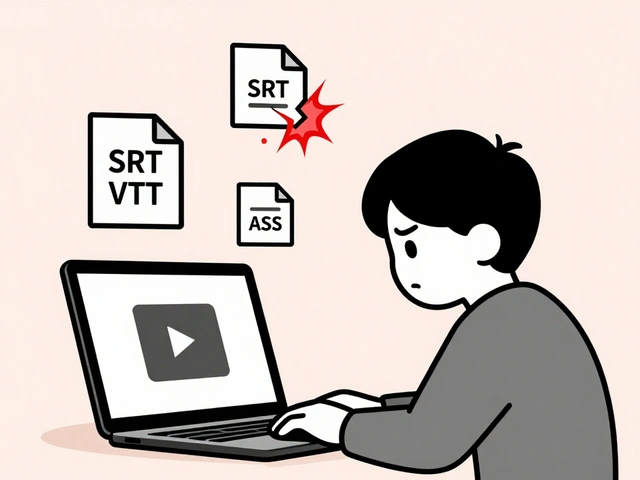20
Fellini’s 8½ Review: The Self-Reflexive Film That Changed Cinema Forever

Fellini’s 8½ isn’t just a movie. It’s a mirror held up to the creative soul-messy, brilliant, and utterly human. Released in 1963, this Italian masterpiece didn’t just break rules; it rewrote what a film could be. At a time when Hollywood was churning out clean narratives and happy endings, Fellini gave us a director drowning in his own mind, stuck on a film he can’t make, surrounded by women, producers, critics, and memories that won’t let him go. It was the first time a film openly admitted it was about the agony of creation-and it did so without apology.
What Is 8½ Really About?
At its core, Fellini’s 8½ is the story of Guido Anselmi, a famous film director played by Marcello Mastroianni, who is paralyzed by creative block. He’s on a spa resort, supposedly to rest and recover, but his mind is a circus. He dreams of his childhood, hallucinates conversations with his wife and mistress, and is constantly chased by producers demanding he deliver a script. The film doesn’t pretend to be linear. Scenes shift without warning. Time bends. Reality and fantasy blur. And yet, it all feels strangely true.
Fellini didn’t just direct this film-he lived it. He was at a similar point in his life: exhausted after the success of La Dolce Vita, pressured by studios, haunted by his own expectations. 8½ became his therapy. The movie’s structure-fragmented, dreamlike, circular-isn’t a gimmick. It’s the sound of a mind trying to rebuild itself.
Why It Was Revolutionary
Before 8½, films about filmmakers were rare. When they existed, they were usually about the glamour-the red carpets, the fame, the awards. Fellini flipped that. He showed the loneliness behind the camera. The panic. The self-doubt. The way creativity doesn’t come on command. He didn’t just depict a director’s crisis-he made the audience feel it.
The film’s self-reflexivity wasn’t just thematic. It was structural. The camera doesn’t just observe Guido; it becomes part of his thoughts. Flashbacks aren’t labeled. Dreams aren’t signaled. You’re dropped into his head without warning. This was unheard of in 1963. Even Godard’s later experiments felt calculated. Fellini’s chaos felt organic.
It influenced everything that came after. Woody Allen’s Stardust Memories is basically 8½ with a Jewish neurotic. David Lynch’s Inland Empire owes it a debt. Even modern TV shows like Succession or The Bear carry its DNA-the obsession with control, the collapse of identity under pressure, the way art becomes a prison.
The Women in 8½
One of the most talked-about aspects of 8½ is its women. There’s Luisa, Guido’s wife-calm, patient, and deeply wounded. Then there’s Carla, his mistress-passionate, demanding, alive. Add in the sultry actress Claudia, the nun from his childhood, the gossiping producers’ wives, and the chorus of women in the spa’s pool. They aren’t just characters. They’re projections. Each one represents a different part of Guido’s guilt, desire, fear, or memory.
Fellini didn’t paint them as villains or saints. They’re real. They’re loud. They’re demanding. And they’re all, in some way, part of the reason Guido can’t make his film. The movie doesn’t excuse him. It shows him as a man trapped by his own contradictions. He wants freedom, but he’s afraid of being alone. He craves love, but he doesn’t know how to give it. The women don’t fix him. They reflect him.

The Visual Language
Fellini didn’t need dialogue to tell you what was happening. He used space. Light. Movement. The spa resort is a labyrinth of white marble, endless corridors, and echoing halls. It feels like a cathedral to failure. The scenes inside Guido’s mind are saturated with color-bright reds, deep blues, blinding whites. The real world is gray and flat. The dream world pulses.
The famous final scene-the circle of dancers-isn’t a resolution. It’s an acceptance. Guido stands in the center, surrounded by the people who have shaped him: his wife, his mistress, his father, his childhood self, his critics. They’re not attacking him. They’re dancing. He’s not in control. He’s just there. And for the first time, he’s okay with that.
The cinematography by Gianni di Venanzo is breathtaking. Long takes. Slow zooms. The camera glides like a ghost. There’s no cutting to hide the emotion. You watch Guido’s face as he realizes he has nothing to say. And you feel it.
Why It Still Matters Today
In 2025, we live in a world obsessed with output. Content. Posts. Videos. Streams. Algorithms demand constant creation. You’re told to be productive, to post daily, to never stop. But what happens when you’re empty? When the well runs dry? 8½ doesn’t offer a solution. It doesn’t tell you to “just push through.” It says: it’s okay to be stuck. It’s okay to be lost. The act of being lost is part of the process.
Today’s creators-filmmakers, writers, artists, YouTubers-are drowning in the same pressure. We’re told to be original, to be authentic, to be viral. But authenticity isn’t a strategy. It’s a risk. And 8½ is the ultimate permission slip to fail.
Fellini didn’t make a film about making a film. He made a film about being human. About the fear that you’re not enough. About the voices that whisper you’re a fraud. About the people who love you but don’t understand you. And about the quiet, terrifying moment when you realize you have to let go of control to find your voice again.

How to Watch 8½
Don’t try to understand it on the first watch. Don’t look for plot. Don’t search for answers. Just feel it. Let the images wash over you. Notice how the music swells when Guido remembers his childhood. Notice how the silence screams when he sits alone in his room. Pay attention to the way the women move-like they’re part of a ritual he can’t escape.
Watch it in a quiet room. Turn off your phone. Let it breathe. You’ll notice things on the second viewing-the way the spa’s pool reflects the sky, the way the director’s hat sits crooked on his head, the way his fingers tremble when he tries to write.
It’s not a movie you watch. It’s a movie you live through.
Legacy and Influence
8½ won the Oscar for Best Foreign Language Film. It was named one of the greatest films of all time by Sight & Sound and the British Film Institute. But its real legacy isn’t in awards. It’s in the filmmakers who saw it and said, “I can do this too.”
It gave permission to the messy, the personal, the nonlinear. It proved that vulnerability could be powerful. That confusion could be cinematic. That a film didn’t need a hero-or even a plot-to be unforgettable.
Today, indie films, arthouse projects, even streaming series like Barry or Atlanta carry its spirit. They don’t explain everything. They leave gaps. They trust the audience to sit with discomfort. That’s 8½’s gift.
Final Thoughts
Fellini’s 8½ is not a film for everyone. It doesn’t entertain. It disturbs. It doesn’t resolve. It lingers. But if you’ve ever stared at a blank screen, wondering if you have anything left to say-if you’ve ever felt like a fraud, even when everyone else says you’re brilliant-then this film will feel like it was made for you.
It’s not cool. It’s not trendy. It’s not optimized for algorithms. It’s raw. It’s real. And it’s still the most honest film ever made about the cost of creation.
Is 8½ a true story?
It’s semi-autobiographical. Federico Fellini was struggling to make his next film after La Dolce Vita, and he channeled his own creative paralysis into Guido’s character. The people, the pressure, the dreams-all mirror his real life. But it’s not a documentary. It’s a poetic distortion of reality, shaped by memory and emotion.
Do I need to know Italian cinema to understand 8½?
No. While knowing Fellini’s earlier work like La Strada or La Dolce Vita adds context, it’s not required. 8½ works because it speaks to universal feelings-doubt, guilt, longing, the fear of failure. You don’t need film history to feel Guido’s pain.
Why is the film called 8½?
Fellini had made seven full-length films before this one. He was working on a project that got canceled, then started another that he abandoned. He counted that unfinished project as half a film. So 7 + 1 (the canceled one) + 0.5 (the abandoned one) = 8½. The title is a joke, a confession, and a statement: he was already halfway through his next failure before he even began.
Is 8½ a comedy or a drama?
It’s both. Fellini blends farce and tragedy seamlessly. There are absurd moments-like the producer trying to sell a spaceship to a bishop-that make you laugh. But right after, you’re hit with Guido’s quiet despair. The film refuses to be boxed into one genre. That’s part of its genius.
Where can I watch 8½ today?
It’s available on Criterion Channel, MUBI, and Amazon Prime Video in many regions. Look for the restored 4K version-it reveals details in the lighting and textures you won’t see in older prints. Avoid low-quality uploads; this film demands to be seen clearly.

